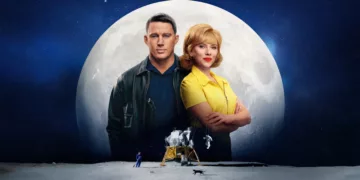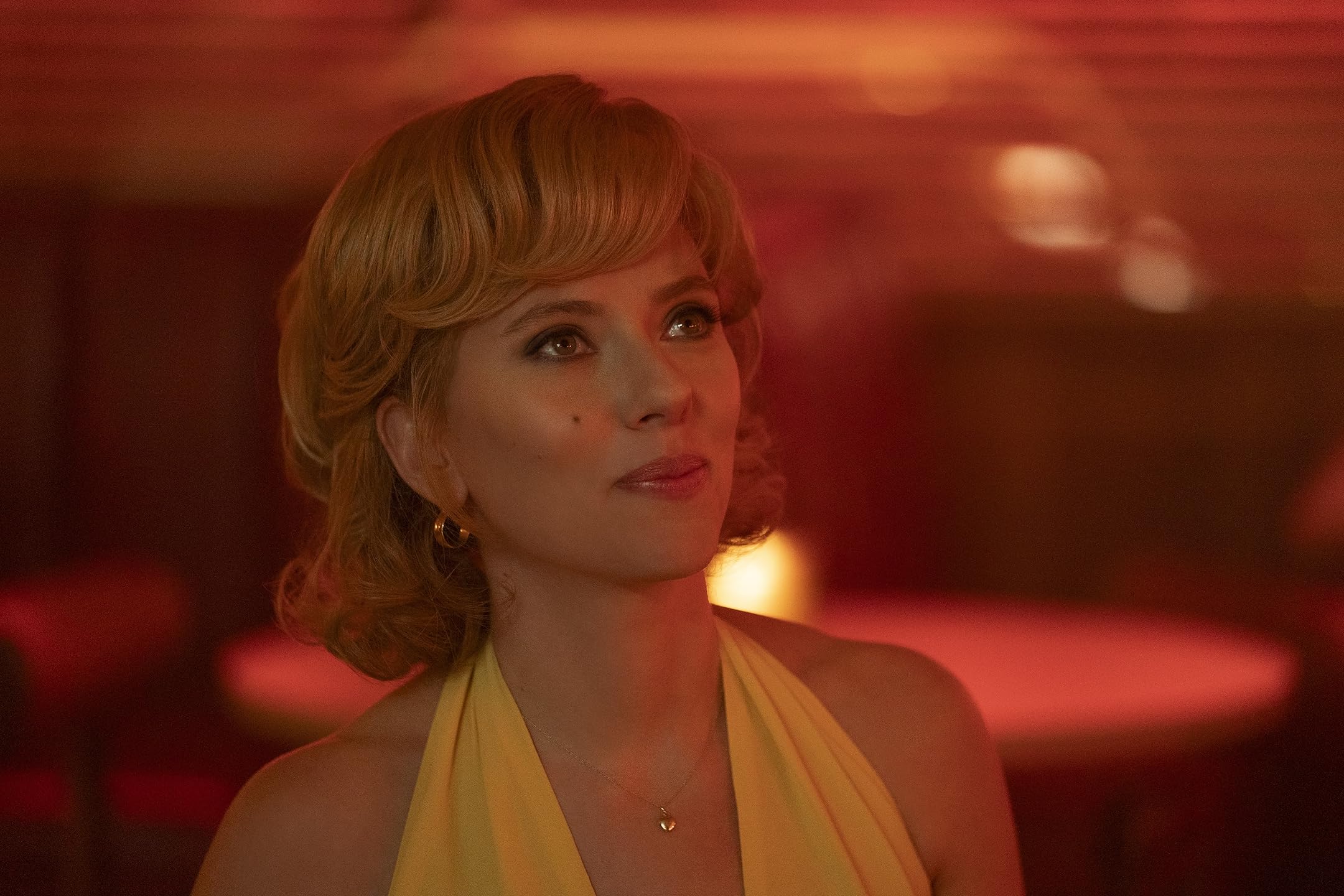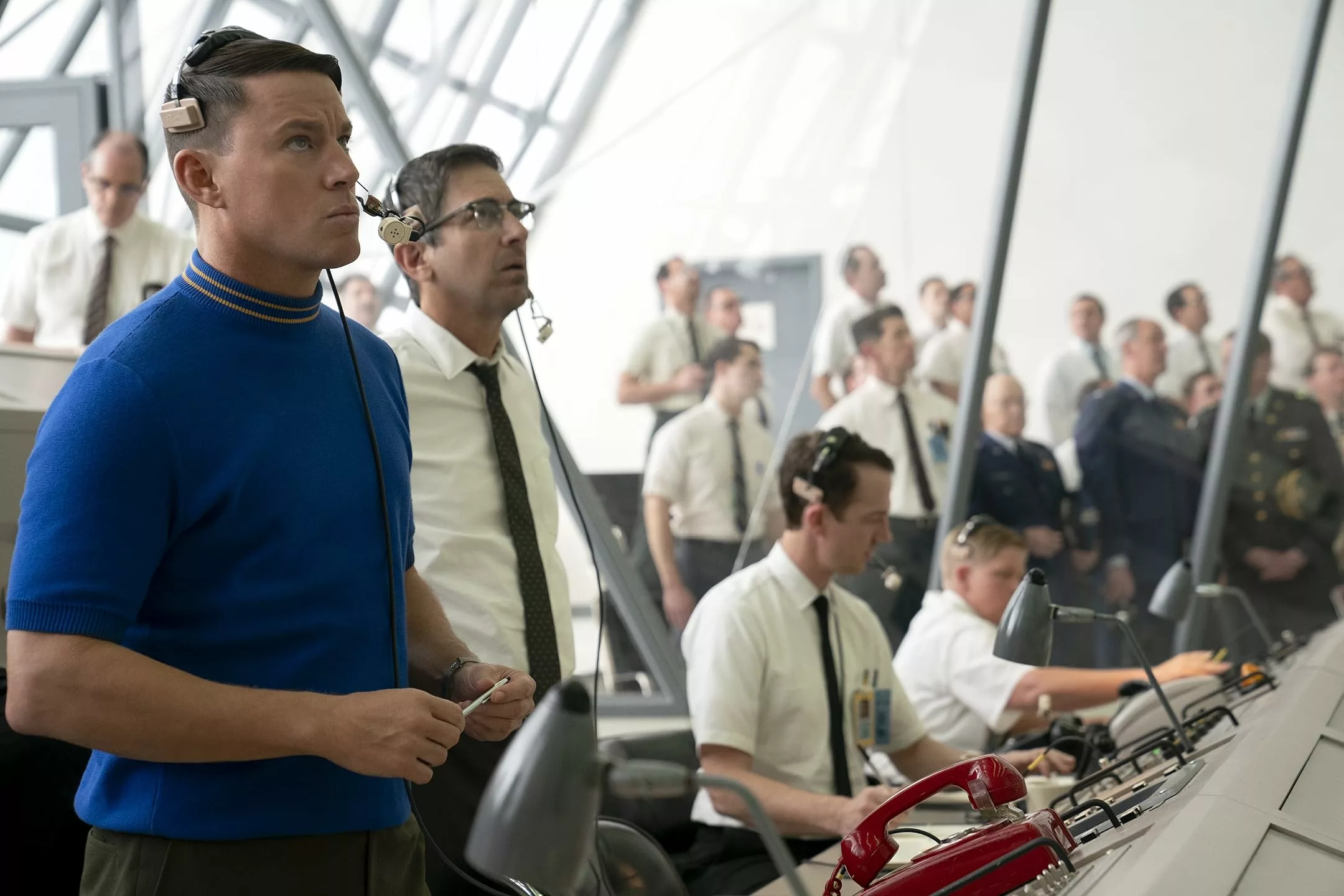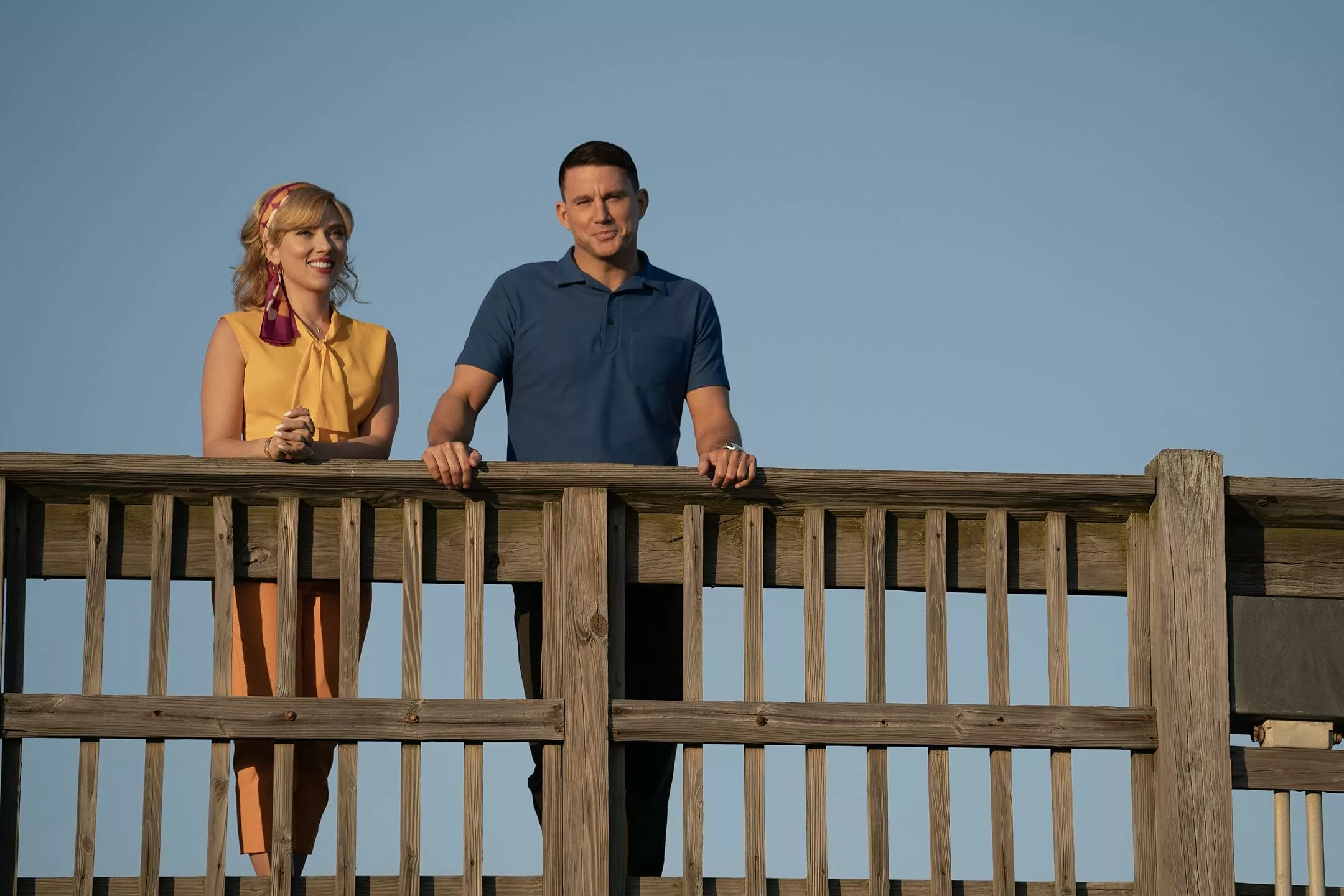The year was 1969, and America was in a race to the stars, but just as important was winning over the hearts and minds of the people back on Earth. Fly Me to the Moon takes us back to that exciting era through the story of a sharp marketing agent tasked with promoting NASA and the Apollo 11 mission.
Scarlett Johansson stars as Kelly Jones, brought in to help launch director Cole Davis, played by Channing Tatum, get the additional funding they need from Congress. But promoting such an ambitious endeavor during an increasingly skeptical time proves challenging, and the pressure leads to unconventional tactics that test both their principles and their growing attraction.
Transported to Florida’s “Space Coast” circa 1960s, we get to experience the sights, sounds, and authentic flair of the period. From the zippy Corvettes and pop culture touches to the true locations like Cape Canaveral that served as the staging ground for American dreams of celestial exploration, the attention to detail draws us straight into the setting. Of course, the real thrill is the chemistry between Johansson and Tatum as their characters spar both professionally and romantically while hovering on the edge of making history.
Though not a documentary, the film finds an entertaining way to explore the ideals, controversies, and commercialization surrounding the original moon missions that still fascinate us today. Director Greg Berlanti balances entertaining drama with thoughtful social commentary on the marriage of science, politics, and publicity. For anyone with an interest in this pivotal era or just looking for a funny and feel-good theatrical escape, Fly Me to the Moon offers a fresh take on a story we thought we knew by heart.
Landing the PR Moonshot
Scarlett Johansson stars as Kelly Jones, a brash New York advertising executive known for her cunning pitches and willingness to bend the truth to close a deal. But after one too many fibs are uncovered, Kelly finds herself in need of a comeback campaign. That’s when a shadowy government agent named Moe, played by Woody Harrelson, enters her life with an opportunity that’s simply out of this world: promoting NASA and its upcoming Apollo 11 mission.
Transplanted to 1960s Florida, Kelly soon encounters her biggest challenge yet in Launch Director Cole Davis, acted with earnest charisma by Channing Tatum. A former military pilot now leading the moonshot team, Cole takes his work seriously, with the lives of astronauts at stake. Butting heads at every turn, Kelly and Cole represent the growing divide between pragmatism and idealism as public support for the costly space program begins to dwindle.
To aid in winning over Congress and the taxpayer’s dollars, Kelly rolls out sponsorships, stages NASA tours, and even uses an actor to portray Cole in a slick promotional video. But her most unconventional tactic emerges when Moe privately tasks Kelly with engineering a secret backup option—filming a fake moon landing ahead of the real event, just in case. Though troubled by such deception, Kelly’s own past misdeeds leave her little choice but to cooperate with Moe’s demands.
As tensions mount leading up to the historic July launch, Kelly’s simulated production and her burgeoning chemistry with the earnest Cole place her in an impossible situation. With the fate of the space race and her own integrity on the line, will Kelly find a way to get America not just to the moon but believing man can make that giant leap?
Bringing the 1960s to Life
This film does a tremendous job of transporting you right to the heart of 1960s Florida. From the moment Kelly steps off the bus in her vibrant dress and exaggerated coif, you feel like you’ve stumbled into a time warp. All around are cars straight from the era—slick Corvettes, stylish Mustangs, and even Kelly’s ride, a shiny powder-blue Camaro convertible.
It’s clear no expense was spared in recreating the iconic period costumes and styles down to the finest details. From Cole’s buttoned-down work shirts to Kelly’s whimsical mini-dresses and modern accessories, each outfit is a work of art in itself. Hair is big and teased to perfection; in vibrant shades, the 1960s did best.
An even bigger thrill is spending time at NASA’s real-life Kennedy Space Center, where you feel immersed in the true settings that history has made. The imposing Vehicle Assembly Building and launch pads look just as we’ve seen in countless photos and films. But this movie was fortunate to capture its own in-house footage of an actual rocket launch, with thrilling shots that make the mission’s challenges profoundly tangible.
Most fascinating is the fake moon landing sequence devised by Kelly and director Lance. Using basic 1960s-era technology and film and editing prowess, they craft a simulation that’s convincingly realistic yet also leaves room for debate. Conspiracy theorists will find much to ponder in their artistic vision of an alternate reality where NASA’s ideal outcome wasn’t guaranteed. It’s a spectacle sure to linger in your mind like an unsolved moon mystery.
From cosmopolitan New York to small-town Florida, this movie beautifully transports you to that pivotal 1960s time. It’s a period piece where visuals feel not just authentic but critical to understanding why that era’s ambitions still resonate so powerfully today.
The Stars of the Show
This film really belongs to its lead actors. Scarlett Johansson takes Kelly Jones and makes her absolutely magnetic from start to finish. Kelly isn’t always easy to like; she’s unapologetically deceptive and out for herself. But Johansson ensures you remain engaged in her journey. She imbues Kelly with such wit, pluck, and depth that you understand her motivations, even if you can’t condone her actions. Beyond looks and charisma, what’s really striking is how Johansson makes Kelly’s many layers feel authentic.
And then there’s Channing Tatum as Cole Davis. On paper, this role doesn’t seem like the most natural fit for Tatum. But once the cameras start rolling, he and Johansson develop such undeniable chemistry that their on-screen sparring just sings. Tatum fully commits to Cole’s earnest nature and heavy burden of responsibility. You believe in his dedication, even when he’s out of his depth with Kelly’s schemes. These two together keep you constantly guessing about where their story may lead.
Some felt Tatum wasn’t quite right for the intellectual side of Cole. But he handles the emotional beats incredibly well. And in the end, it’s that connection with Johansson that makes their relationship compelling. Beyond the visual fireworks, these actors construct real three-dimensionality within their imperfect characters.
In supporting roles, keep an eye out for Woody Harrelson as the shady Moe. Harrelson acts as the puppet master, casually pulling the strings in the most unsettling ways. Yet he’s hilarious doing it. Ray Romano also stands out, perfectly embodying the hapless NASA publicist thrust into Kelly’s schemes.
Ultimately, this is an ensemble that lets the material shine through naturalism over bombast. Big stars handle weighty roles with warmth and wit. Johansson and Tatum give it their all, but never forget the fun. Their chemistry drives straight to the heart of this story’s spirit of competition, discovery, and unlikely chemistry in difficult times.
Period Politics and Public Persuasion
This film manages a neat trick: it’s enjoyable fluff packed with meatier subtext. The zingy dialogue and chemistry between Johansson and Tatum give Fly Me to the Moon its comedic lift. But don’t be fooled; there’s genuine shrewdness beneath the antics.
This story examines how perception shapes reality and how the desire to reshape public opinion can distort the truth. Kelly understands the power of a good pitch. With the right marketing, she can make people believe anything, including doubting what they can see with their own eyes.
Some have accused the film of being too cynical, suggesting NASA faked history to feed America’s ego. But it presents a nuanced debate. National pride and scientific progress are often mixed with messier realities, from fuel shortages to shifting political tides. And while the space race reflected Cold War battles, funding depended on keeping citizens invested.
Perhaps some facts were, shall we say, polished for optimum public consumption? After all, how far would leaders go to ensure legends that powered future achievement? The film leaves such questions delightfully unanswered, recognizing ambiguity in historic events as vast as the moon landing.
What rings truest is that perception shaped the space race at least as much as science did. And in an era when televised images defined reality for many, controlling the narrative became all-important.
So Fly Me to the Moon sits firmly in the tradition of entertaining to inform, with a potent message: that the relationship between public and state is complex, subjective, and sometimes suspiciously cozy. It engages viewers not with answers but by holding a mirror to our own willingness to question what’s shown to us and why.
Flying High on Fun and Funky Flair
Overall, I’d say Fly Me to the Moon is a real hoot. With its lively 1960s setting, zappy dialogue, and fine performances from Johansson and Tatum, it kept me entertained from start to finish.
While probably not topping any best picture lists, as a light and funky slice of summer celluloid, it certainly does the job well.
This movie isn’t rewriting the history books, yet it finds a fun way to reference a pivotal period and ponder truths about how perceptions shape reality. All told with a twinkly glint in its eye rather than finger-wagging seriousness.
What truly lifts it are the production qualities. From the groovy costumes and location filming to quirks like period advertising and a cracking soundtrack, it sells the era with real panache.
Even Tatum, whom some found stiff, has his moments opposite Johansson’s spark. And she lends the perfect cool charisma to her cunning character.
With the added bonus of conspiratorial subtexts for those pondering hidden truths, overall, I’d heartily recommend giving Fly Me to the Moon a spin. Sometimes light fluff is just the ticket, and this serves it up with real funky flair.
I’d gladly watch it again just to soak up those pops of meticulously nostalgic design. So whether you go for the history or comedy, it’s well worth a look. A solid 8/10 for undemanding summer entertainment doing what it does with great groovy gusto.
Celebrating Space and Sparks With Fly Me to the Moon
All in all, I’d say Fly Me to the Moon is a real crowd-pleaser. It pays loving attention to recreating the sights, sounds, and styles of 1960s Florida. From the costumes and cars to the iconic sights at Cape Canaveral, it really pulls you into the era.
Scarlett Johansson and Channing Tatum also make for a very entertaining pair, their lively banter and will-they-won’t-they chemistry carrying the lighthearted story along nicely. It puts a fun twist on the fateful Apollo 11 mission that conspiracy theorists are sure to debate.
If you’re a fan of space history or 1960s-set romantic comedies, this movie delivers the goods. It’s a tasty popcorn flick that manages to inform and entertain in equal measure.
So whether you want nostalgia, flirtation, or an alternative take on the first moon landing, I think you’ll find plenty to enjoy with Fly Me to the Moon. Let me know if any other questions come up! Otherwise, I hope you have fun giving this summery title a spin.
The Review
Fly Me to the Moon
In summary, Fly Me to the Moon is a lighthearted yet meticulously researched film that brings a fresh perspective to the Apollo 11 mission. While not totally accurate historically, it finds an engaging way to ponder how perceptions shaped such a pivotal period. Johansson and Tatum provide plenty of sparky chemistry against the funky backdrop of 1960s Florida. All in all, this makes for a thoroughly entertaining summer popcorn flick.
PROS
- Engaging chemistry between Johansson and Tatum
- Authentic recreation of a 1960s setting in Florida
- Informative while also being comedic and enjoyable.
- Provides an alternative perspective on Apollo 11 events.
CONS
- Somewhat fictionalized accounts aren't fully accurate.
- Tatum's performance is weaker than Johansson's.
- Budget limitations slightly impact production values.




















































